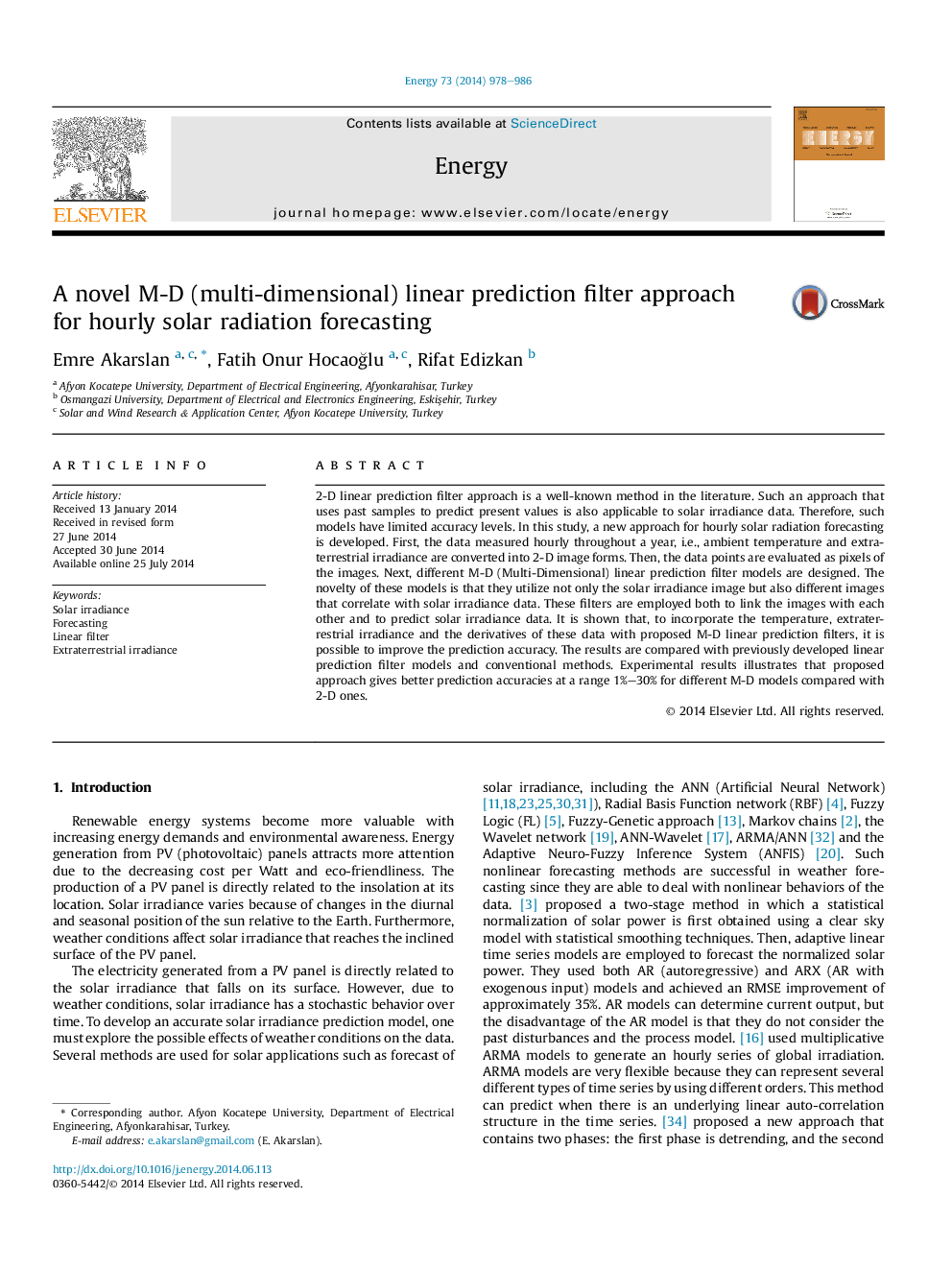| Article ID | Journal | Published Year | Pages | File Type |
|---|---|---|---|---|
| 8077216 | Energy | 2014 | 9 Pages |
Abstract
2-D linear prediction filter approach is a well-known method in the literature. Such an approach that uses past samples to predict present values is also applicable to solar irradiance data. Therefore, such models have limited accuracy levels. In this study, a new approach for hourly solar radiation forecasting is developed. First, the data measured hourly throughout a year, i.e., ambient temperature and extraterrestrial irradiance are converted into 2-D image forms. Then, the data points are evaluated as pixels of the images. Next, different M-D (Multi-Dimensional) linear prediction filter models are designed. The novelty of these models is that they utilize not only the solar irradiance image but also different images that correlate with solar irradiance data. These filters are employed both to link the images with each other and to predict solar irradiance data. It is shown that, to incorporate the temperature, extraterrestrial irradiance and the derivatives of these data with proposed M-D linear prediction filters, it is possible to improve the prediction accuracy. The results are compared with previously developed linear prediction filter models and conventional methods. Experimental results illustrates that proposed approach gives better prediction accuracies at a range 1%-30% for different M-D models compared with 2-D ones.
Related Topics
Physical Sciences and Engineering
Energy
Energy (General)
Authors
Emre Akarslan, Fatih Onur HocaoÄlu, Rifat Edizkan,
